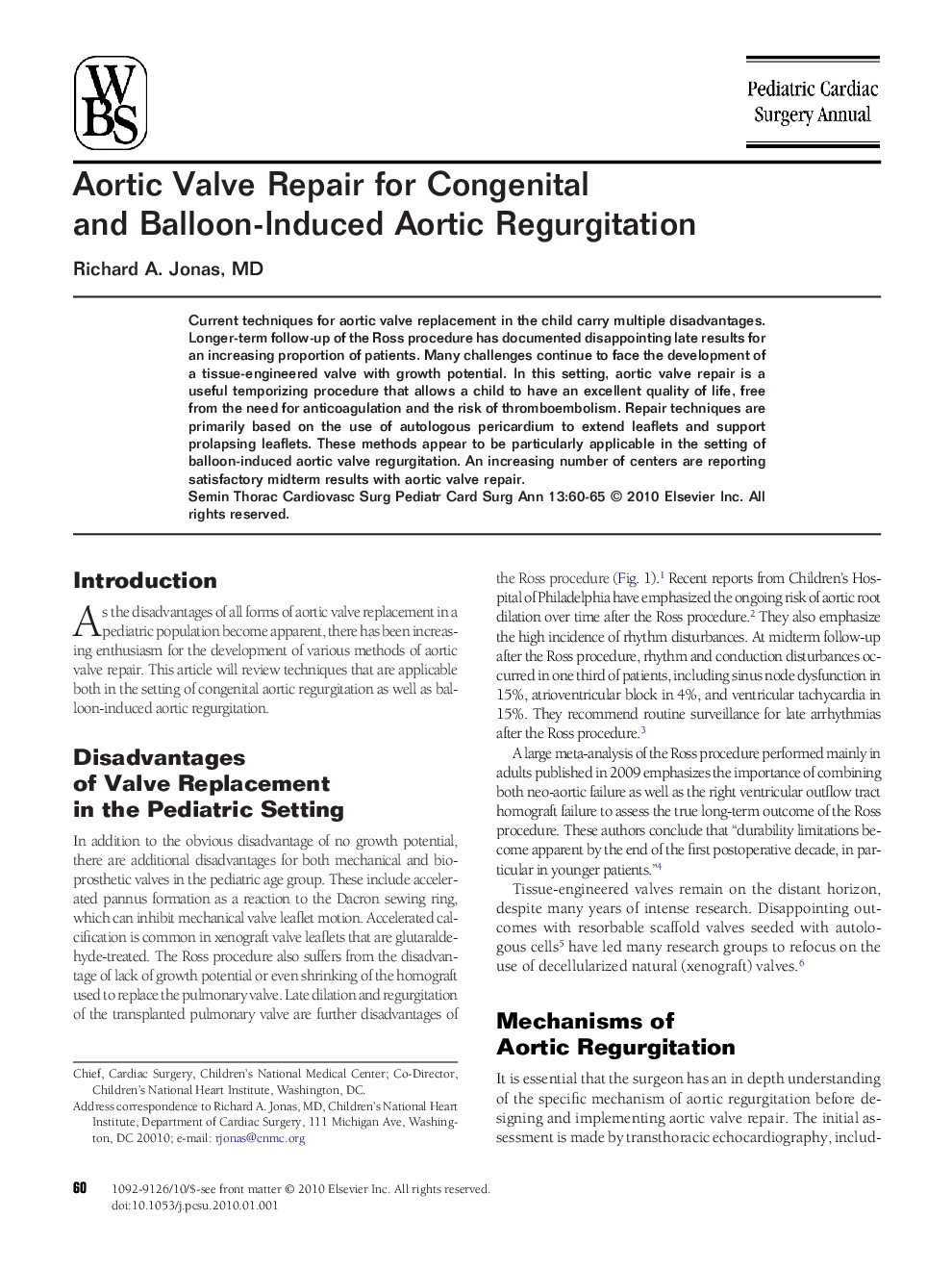| Article ID | Journal | Published Year | Pages | File Type |
|---|---|---|---|---|
| 3026033 | Seminars in Thoracic and Cardiovascular Surgery: Pediatric Cardiac Surgery Annual | 2010 | 6 Pages |
Abstract
Current techniques for aortic valve replacement in the child carry multiple disadvantages. Longer-term follow-up of the Ross procedure has documented disappointing late results for an increasing proportion of patients. Many challenges continue to face the development of a tissue-engineered valve with growth potential. In this setting, aortic valve repair is a useful temporizing procedure that allows a child to have an excellent quality of life, free from the need for anticoagulation and the risk of thromboembolism. Repair techniques are primarily based on the use of autologous pericardium to extend leaflets and support prolapsing leaflets. These methods appear to be particularly applicable in the setting of balloon-induced aortic valve regurgitation. An increasing number of centers are reporting satisfactory midterm results with aortic valve repair.
Related Topics
Health Sciences
Medicine and Dentistry
Cardiology and Cardiovascular Medicine
Authors
Richard A. MD,
